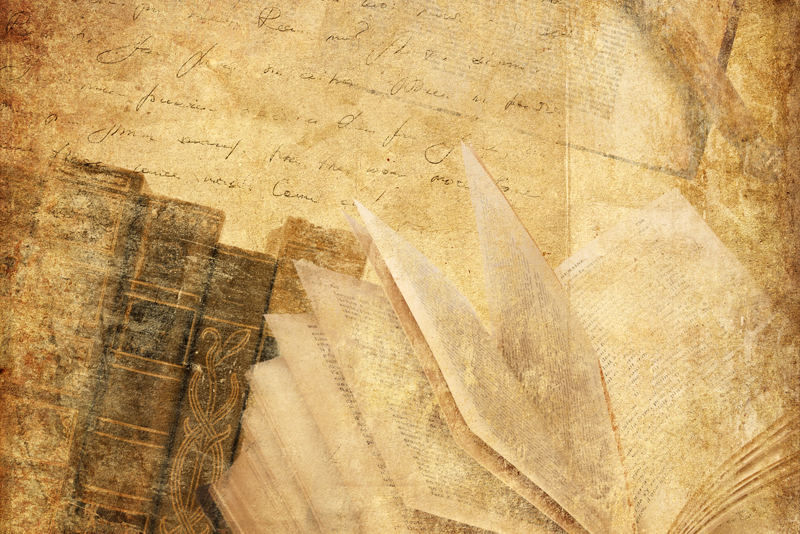Gothic Literature - Concept and Elements

When we hear the term Gothic literature, what usually comes to mind? Perhaps some storyline that involves darkness and evil? Spells? Somberness? The term 'Goth' was originally stemmed from 12th century architecture - mainly from the menacing cathedrals and castles that stood formidable and looked indestructible, in which the term was used to describe them.
The Gothic genre is a form of literature that involves the combination of horror, fear, apprehension and romance. Its elements include melodrama and supernatural tendencies in which there is always a sense of dread of what is about to happen, given just the settings and surroundings, rather than the actions of an antagonist. Gothic literature was first recognized in 1764 as a genre through Horace Walpole’s novel, The Castle of Otranto. The genre was formed to expand the feelings of readers of the Romantic era whom were looking for a different form of pleasure in literature, an extension, a twist to the usual medieval romance, before the onset of the Victorian era. The Gothic brought with it an atmosphere of apprehension and pleasurable discomfort, instilling in the readers fear so exciting that they longed for more.
The elements in the early Gothic works always include settings that involve dark and menacing –and sometimes ruined- castles or cathedrals, abbeys, or other religious or historic foundations that hold secrets of their own. The setting in this genre is the most important of all elements, and is what the Gothic work was made up of, as, if unable to have the setting as it should be, everything else within the plot couldn't fall into place. With the setting in place, the atmosphere of dread and fear has been instilled, and the reader is somewhat expectant of the events that is to follow, and awaits with dreaded anticipation.
There is also always the young and virtuous maiden who is lost, separated, or escapes from her wealthy and aristocratic family (in which this part is revealed later in the plot), or separated from her true love and sets out to find some answers to lingering questions. There is the hero, witty, strong and courageous, who, of course, always rescues the maiden and has her as his bride. Then we have the antagonist, the villain who tries to make life a living hell for the hero, oftentimes for the maiden as well. We can't forget the supernatural elements, which almost always exists within the creepy castles: the idea of the lingering ghost of the house owner who died years ago; or of an evil spirit that was conjured by an ancestor and never left. Some authors of this genre at the time include aforementioned Horace Walpole, Ann Radcliffe (The Mysteries of Udolpho and A Sicilian Romance) and Clara Reeve (The Old English Baron).
Over the years, we've come to see the slight shifts within the genre, as authors began to expand on the idea of the Gothic and on other ways to bring that awe and exciting fear in a way different from the traditional Gothic way. As the genre began to fade in the late 1900s, there emerged the likes of Mary Shelley with her novel Frankenstein, which, although clearly Gothic, takes a different form in that it introduces a psychological element in addition to the supernatural. We take a look at Oscar Wilde's The Picture of Dorian Gray, and we feel the Gothic atmosphere as we read it, not the typical supernatural, but, like Frankenstein, the psychological aspect as well that speaks to the reader, allowing him/her to think beyond what they read, figure out answers on their own. More examples of this shift include The Raven by Edgar Allan Poe and The Strange Case of Dr. Jekyll and Mr. Hyde by Robert Louis Stevenson. Other literary works began to take on more Gothic elements to their settings, such as Charlotte Bronte's Jane Eyre. Although the novel leans more towards literary romance, it possesses the eerie and menacing castle element of the Gothic, which is enough to have it listed under the genre type. Emily Bronte's Wuthering Heights and Jane Austen's Northanger Abbey, follow suit with this peculiar style.
As more years go by, the shift is subtle but much significant, as more authors become more unconventional, adding their touch and twist to the idea of the Gothic.
For more on this topic, visit the related link below this article.
I have no faith in human perfectability. I think that human exertion will have no appreciable effect upon humanity. Man is now only more active – not more happy – nor more wise, than he was 6000 years ago.
The Gothic genre is a form of literature that involves the combination of horror, fear, apprehension and romance. Its elements include melodrama and supernatural tendencies in which there is always a sense of dread of what is about to happen, given just the settings and surroundings, rather than the actions of an antagonist. Gothic literature was first recognized in 1764 as a genre through Horace Walpole’s novel, The Castle of Otranto. The genre was formed to expand the feelings of readers of the Romantic era whom were looking for a different form of pleasure in literature, an extension, a twist to the usual medieval romance, before the onset of the Victorian era. The Gothic brought with it an atmosphere of apprehension and pleasurable discomfort, instilling in the readers fear so exciting that they longed for more.
The elements in the early Gothic works always include settings that involve dark and menacing –and sometimes ruined- castles or cathedrals, abbeys, or other religious or historic foundations that hold secrets of their own. The setting in this genre is the most important of all elements, and is what the Gothic work was made up of, as, if unable to have the setting as it should be, everything else within the plot couldn't fall into place. With the setting in place, the atmosphere of dread and fear has been instilled, and the reader is somewhat expectant of the events that is to follow, and awaits with dreaded anticipation.
There is also always the young and virtuous maiden who is lost, separated, or escapes from her wealthy and aristocratic family (in which this part is revealed later in the plot), or separated from her true love and sets out to find some answers to lingering questions. There is the hero, witty, strong and courageous, who, of course, always rescues the maiden and has her as his bride. Then we have the antagonist, the villain who tries to make life a living hell for the hero, oftentimes for the maiden as well. We can't forget the supernatural elements, which almost always exists within the creepy castles: the idea of the lingering ghost of the house owner who died years ago; or of an evil spirit that was conjured by an ancestor and never left. Some authors of this genre at the time include aforementioned Horace Walpole, Ann Radcliffe (The Mysteries of Udolpho and A Sicilian Romance) and Clara Reeve (The Old English Baron).
Over the years, we've come to see the slight shifts within the genre, as authors began to expand on the idea of the Gothic and on other ways to bring that awe and exciting fear in a way different from the traditional Gothic way. As the genre began to fade in the late 1900s, there emerged the likes of Mary Shelley with her novel Frankenstein, which, although clearly Gothic, takes a different form in that it introduces a psychological element in addition to the supernatural. We take a look at Oscar Wilde's The Picture of Dorian Gray, and we feel the Gothic atmosphere as we read it, not the typical supernatural, but, like Frankenstein, the psychological aspect as well that speaks to the reader, allowing him/her to think beyond what they read, figure out answers on their own. More examples of this shift include The Raven by Edgar Allan Poe and The Strange Case of Dr. Jekyll and Mr. Hyde by Robert Louis Stevenson. Other literary works began to take on more Gothic elements to their settings, such as Charlotte Bronte's Jane Eyre. Although the novel leans more towards literary romance, it possesses the eerie and menacing castle element of the Gothic, which is enough to have it listed under the genre type. Emily Bronte's Wuthering Heights and Jane Austen's Northanger Abbey, follow suit with this peculiar style.
As more years go by, the shift is subtle but much significant, as more authors become more unconventional, adding their touch and twist to the idea of the Gothic.
For more on this topic, visit the related link below this article.
I have no faith in human perfectability. I think that human exertion will have no appreciable effect upon humanity. Man is now only more active – not more happy – nor more wise, than he was 6000 years ago.
--- Edgar Allan Poe
You Should Also Read:
Gothic Lit - Contemporary Authors
The Picture of Dorian Gray Review
Women Literary Writers - 1700s to early 1800s

Related Articles
Editor's Picks Articles
Top Ten Articles
Previous Features
Site Map
Content copyright © 2023 by Ije Yvonne. All rights reserved.
This content was written by Ije Yvonne. If you wish to use this content in any manner, you need written permission. Contact Yvonne Ije for details.







